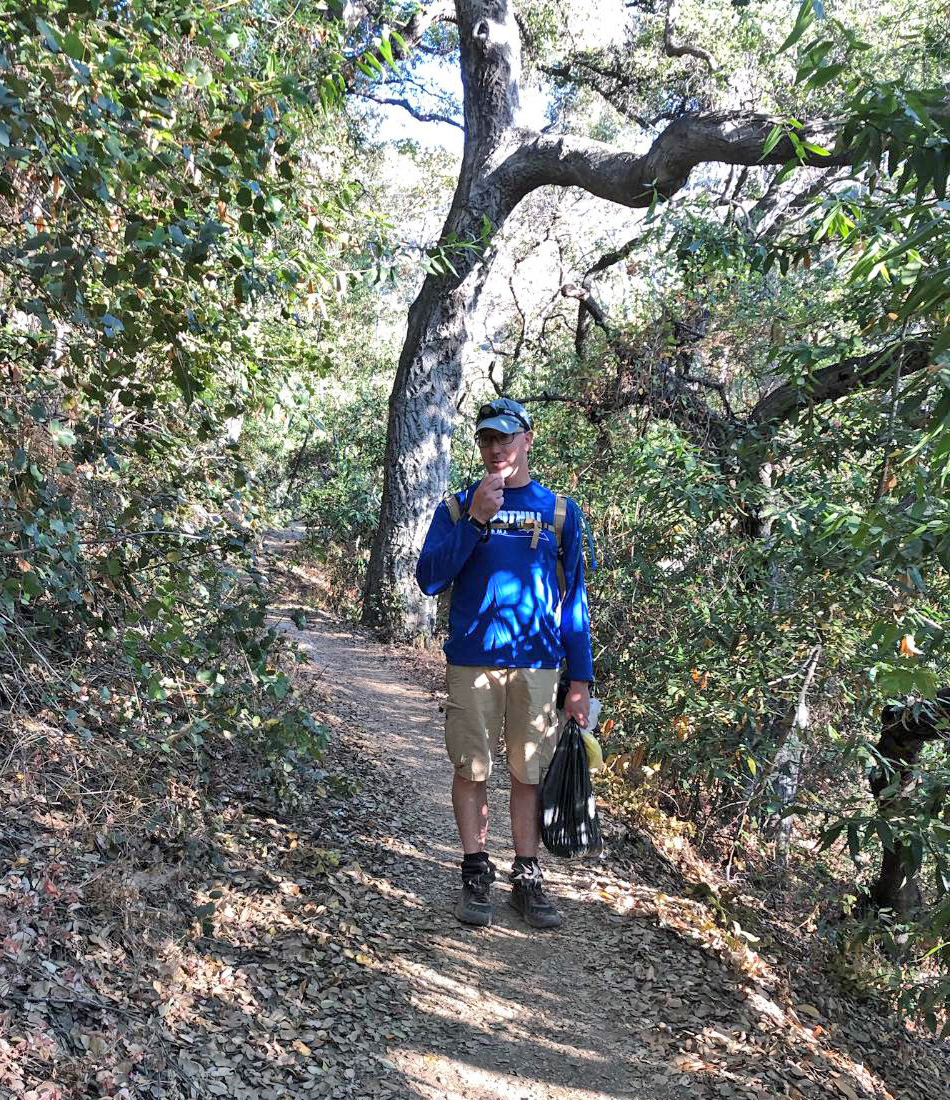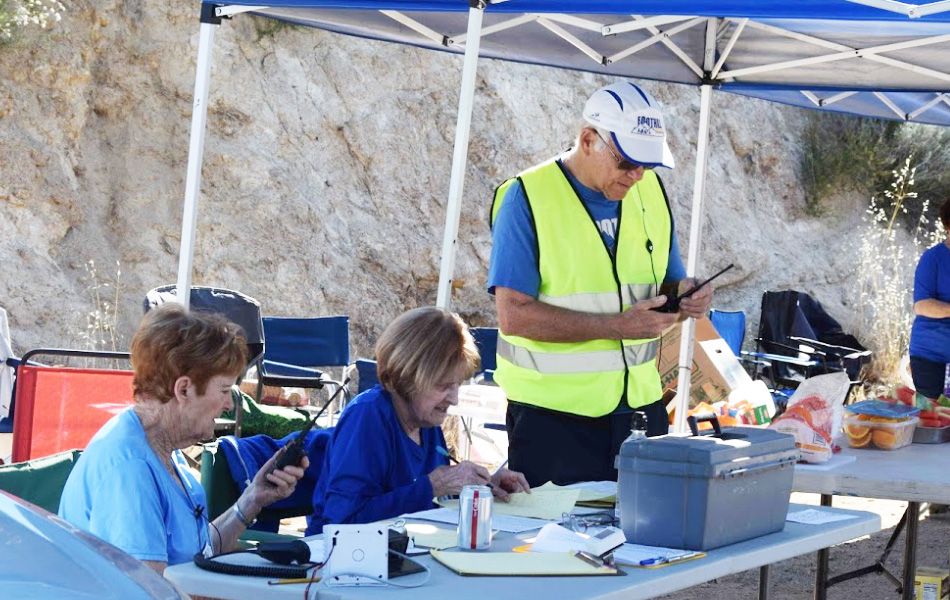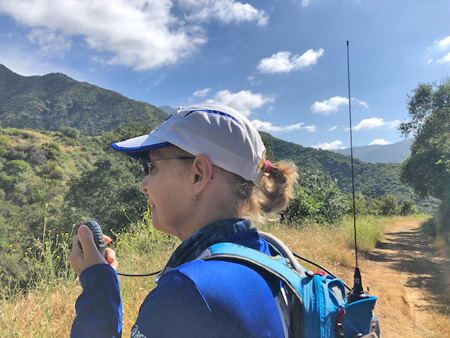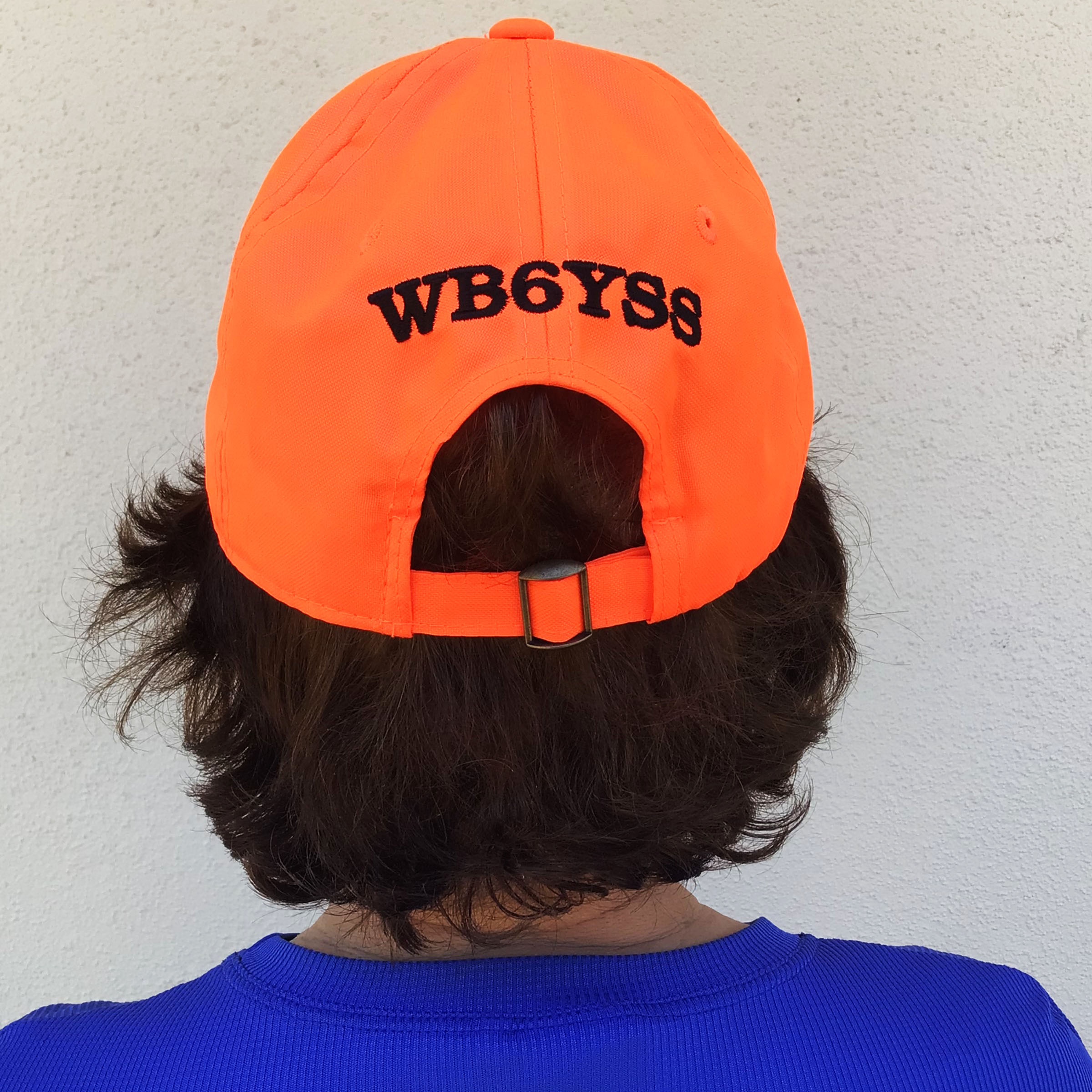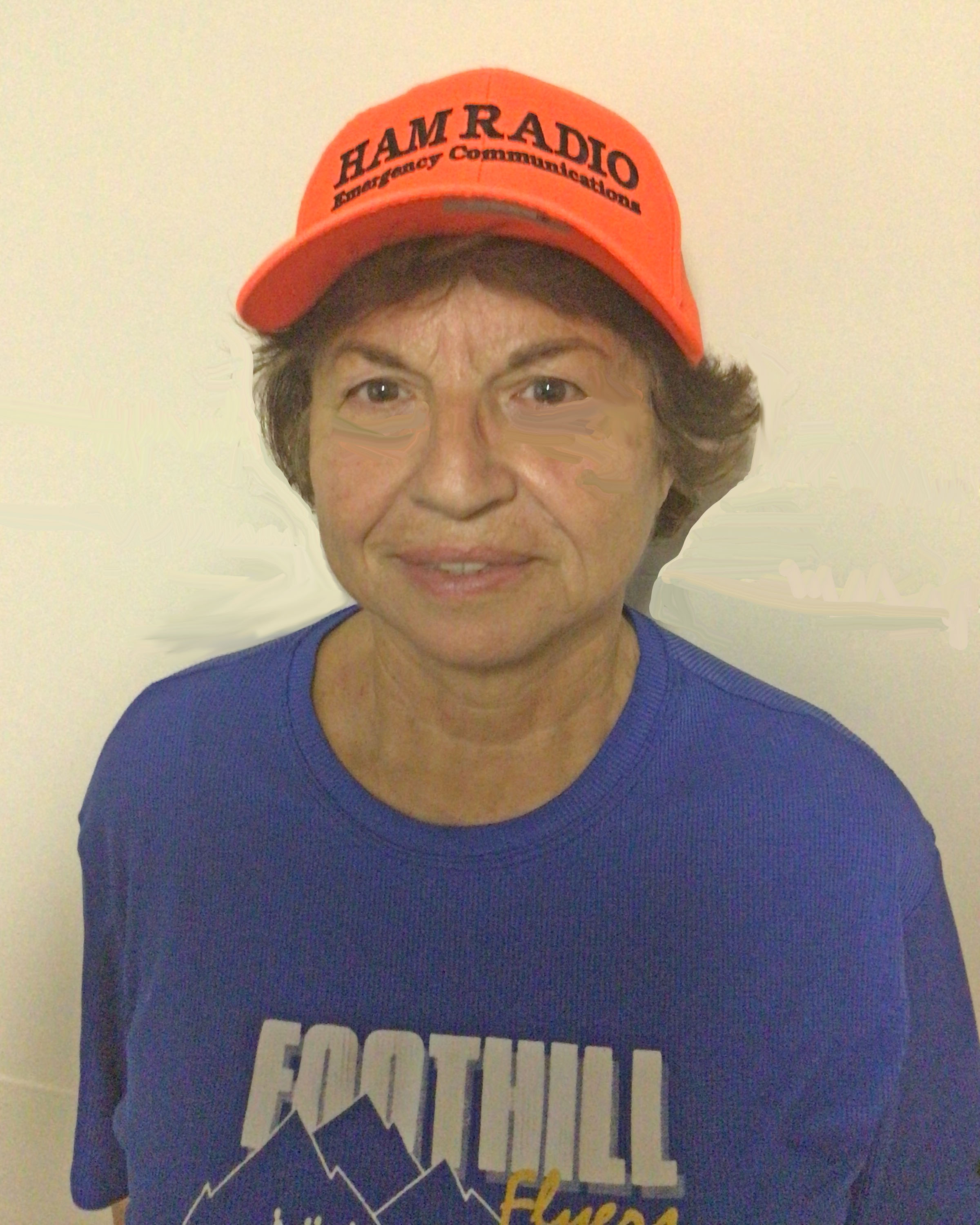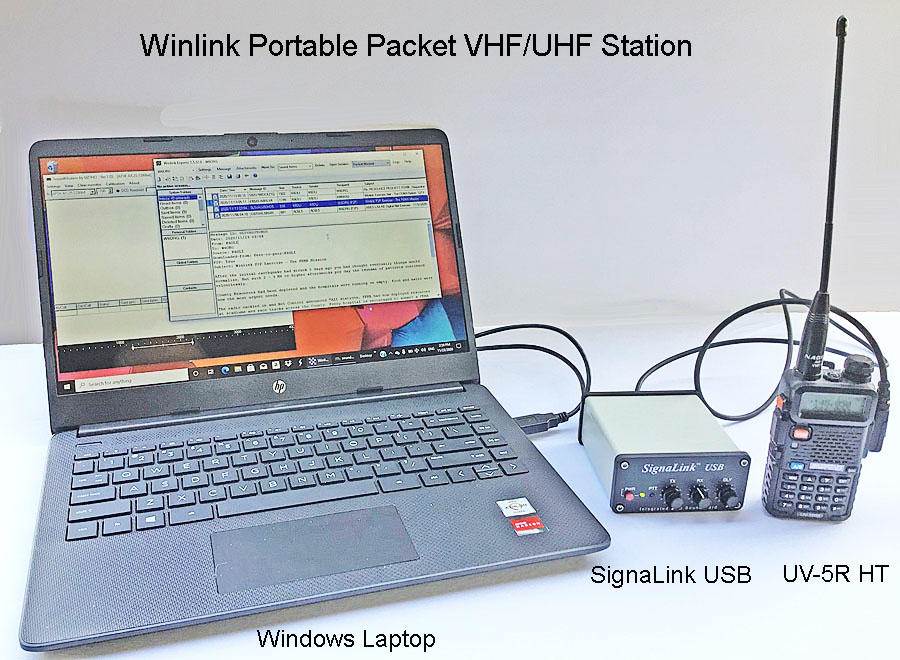Who We Are:
The Foothill Flyers Radio Club is a club within the Foothill Flyers Running Club. This club encourages trail runners to get their FCC Amateur Radio (Ham) licenses, helps them to become familiar with Ham radios and procedures, and to volunteer at trail races and related events. Emergency Communications and runner safety is the primary focus. See Trail Running and Amateur Radio.
The club runs on Wednesday nights starting at 6:15pm from the REI parking lot in Arcadia. Many of the hams in the Foothill Flyers Running club run/walk with their radios set to 446.000 MHz simplex.
Purpose:
Amateur Radio can play a critical part in trail runner safety in remote areas where cell phones do not work. Therefore, it is imperative that trail races use sweeps that are capable trail runners as well as being licensed hams and also have runner/hams at aid stations that are able to run up trail if necessary. Carrying a ham radio with you on training runs in the mountains can make the difference in getting help if you are injured. Ham radio is the first line of communications in times of disasters like earthquakes.
Events:
Avalon 50K / 50 Mile, January, aid station, finish line and timing.
Wistaria Festival, March, Sierra Madre, monitor crowds.
RMHC Walk for Kids 5K April, Rose Bowl, sweeps & aid station.
Kid-Fit 5K, May, Legg Lake, sweeps and aid station
Mt. Wilson Trail Race, May, runner tracking, check point comm
with Sierra Madre Search & Rescue
Angeles National Forest 25K/50K/60K, July, sweeps and aid station.
Angeles Crest 100 Mile Trail Race, August, sweeps and trail marking.
Sierra Madre Halloween Alegria Ave block party, monitor crowds.
Sierra Madre 4th of July Parade, monitor crowds.
Many members are CERT trained and may respond to incidents.
Membership:
Membership is limited to licensed Radio Amateurs who are current members of the Foothill Flyers Running Club.
There are no dues and members may opt in or out at any time.
Club Directors:
Richard Besocke, KI6ZKM, Club Callsign Trustee
Tom O’Hara, W6ORG, President
Maria Vangilder, KG6REG, Vice President
Brian Cravens, KM6PSV, Secretary/Treasurer
Mary Ann O'Hara, WB6YSS, Director
Members:
Mary Plazony, KN6BPY
Brett Terrell, KM6VQB
Dan Stein, KE6OOF
Mary Knudson, KN6BPK
Dave Hokanson, KM6WBG
Maria Case, KK6RNK
Jimmy Downs, KJ6KVI
Tom Parkes, KI6DDB
Stephanie Chiasson, KN6LND
Leslie Hallimore, KN6NGS
Lori Stein, KJ6RYD
Jim Kasama, KN6ZUG
Willie Thornal, KI6TQJ
Club Constitution & Bylaws established June 19, 2019
Trail Race Sweep Notes:
Best to have two or more runners sweep than one - One needs to be a ham to communicate the situation to get help coming, and the other to stay with and concentrate on the down runner. A ham may need to find a high point to establish communications and leave the down runner. Also 2 runners can leap-frog or one hold the bag and take the trail down quicker to stay closer following the last runner.
Check in early at the starting aid station to get info from the aid station captain, medical and hams about any runner that they believe may have problems or is on the watch list. Verify communications with the aid station hams and net control before leaving.
Start immediately after the last runner, but at no time ever pass the last runner. Report any runner stalled or having a problem to the closest aid station and your assessment of the runners situation depending on the rules of the event and your best judgement - runner decides to continue on or turn back or a race official decides; Who decides to call search and rescue or is medical available at an aid station and the captain decides the action?. In your best judgement, given the situation, can the runner make it back on their own or needs one of you to escort keeping in mind that if one goes back on the course, any other runners ahead who might need help will be one person less to help and could be on their own.
Carry enough water and energy food for yourself plus any down runner you may come across. Carry first aid kit and salt tablets. Take a Red Cross first aid, CERT or EMT class to better know what to do when you come across a down runner, especially evaluating for dehydration, heat exhaustion or bleeding from a fall.
While cell phones dont work well in the mountains, bring it with you to be able to give your latitude and longitude to first responders from its GPS and Google Map app - See Finding Your Location.
Bring a trash bag if also taking down the trail or you come across trash. Dispose of it at home, do not use the bear proof forest trash boxes.
Article: Sweeping AC100 2022 - Sweeping AC100 2025
 Site Index - Foothill Flyers Home Page -
Ham Radio Classes -
Ham Links - EMCOMM Links -
Sweep Notes -
Operating Procedures
Site Index - Foothill Flyers Home Page -
Ham Radio Classes -
Ham Links - EMCOMM Links -
Sweep Notes -
Operating Procedures